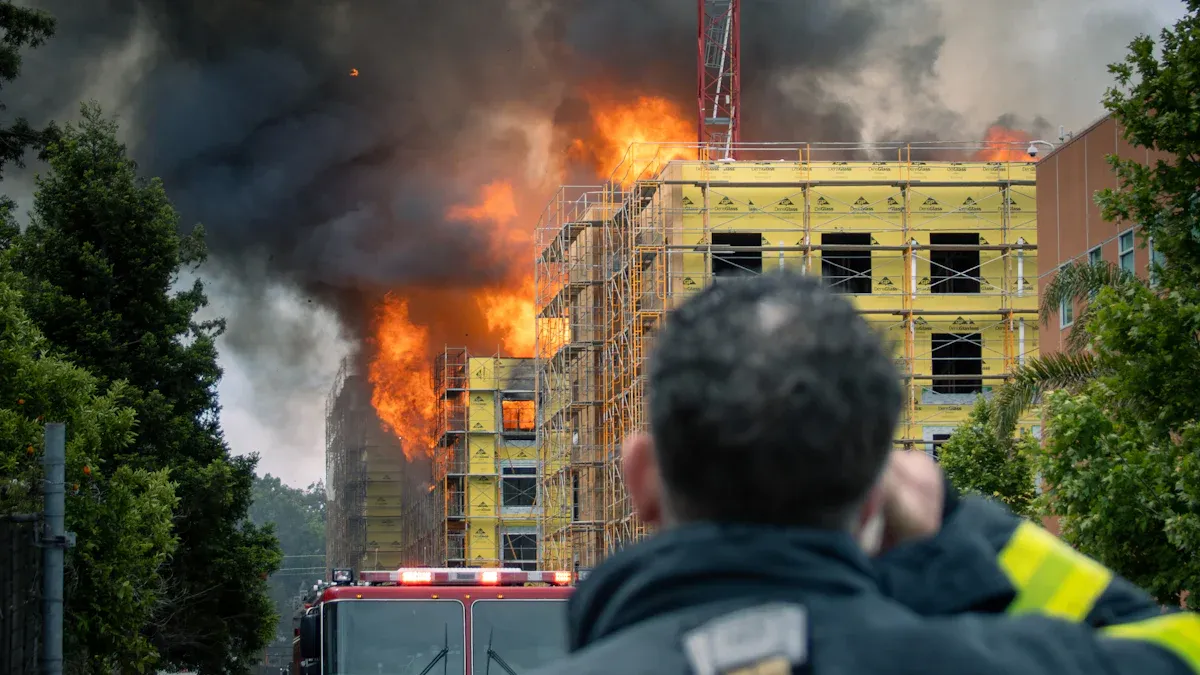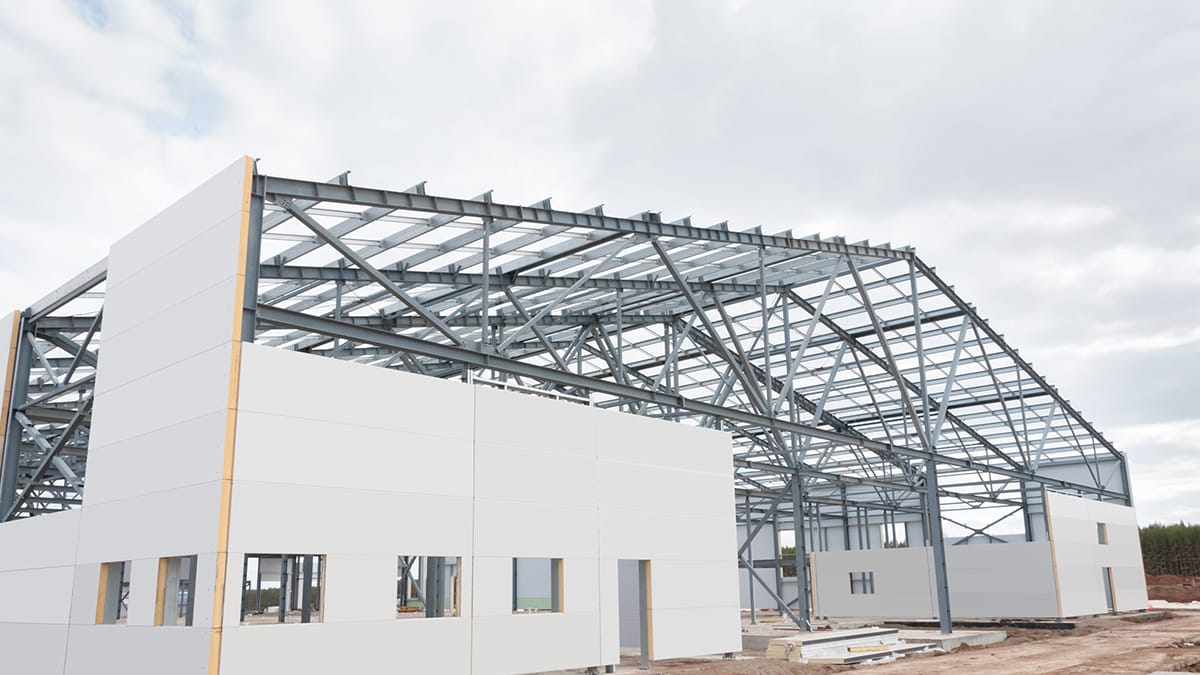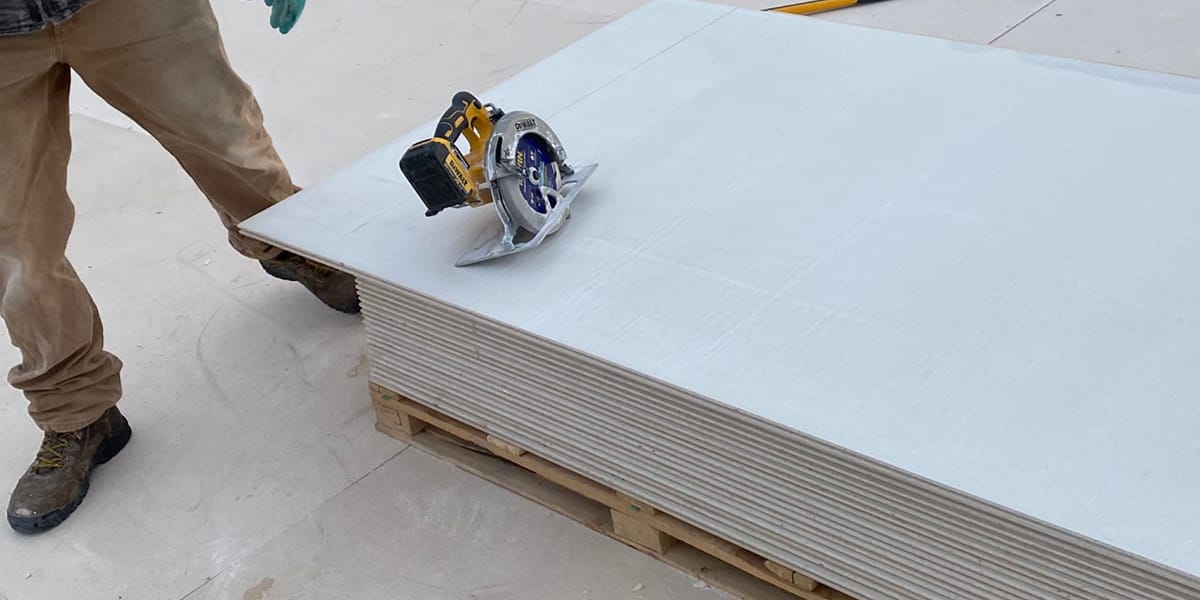
20 Nov What Are Fire Resistant Sheathing Boards and How Are They Used in Modern Construction
Table of Contents
- 1 Key Takeaways
- 2 What Are Fire Resistant Sheathing Boards
- 3 Uses in Modern Construction
- 4 Types of Fire Resistant Boards
- 5 Benefits of Fire Resistant Sheathing Boards
- 6 FAQ
- 6.1 What makes fire resistant sheathing boards different from regular boards?
- 6.2 Can you use fire resistant sheathing boards outside?
- 6.3 How do you know if a board meets fire safety codes?
- 6.4 Are fire resistant boards safe for homes with children?
- 6.5 Do fire resistant sheathing boards cost more than regular boards?
You use fire resistant sheathing boards to keep buildings safe from fire. These boards work as shields that slow down flames and heat. They stop fires from starting with things that burn, bad wiring, and insulation that catches fire. They also help stop fire from moving through empty spaces and gaps. The table below shows how these boards help with different fire dangers in new buildings.
Common Fire Hazards in Modern Construction | Role of Fire-Resistant Sheathing Boards |
|---|---|
Combustible materials (e.g., untreated wood, plastic) | Stops fire from starting and spreading |
Electrical faults and overloaded circuits | Lowers the chance of fire starting |
Open-plan spaces without compartmentalization | Slows fire by acting as a shield |
Flammable insulation materials | Adds a layer that does not burn |
Hidden voids in construction | Stops fire from moving in walls and ceilings |
Key Takeaways
Fire resistant sheathing boards help keep buildings safe from fire. They slow down flames and heat. This gives people more time to get out safely. These boards help buildings follow fire safety rules. They make sure buildings are safe for people inside. There are different kinds of fire resistant boards. Some are made from gypsum or magnesium oxide. Each type has special benefits. Some resist water. Some can handle very high heat. Using these boards can make insurance cheaper. They also help lower damage after a fire. This makes them a good choice for any building. Fire resistant boards can be used in many places. You can use them in homes, schools, and hospitals. They help keep everyone safer.
What Are Fire Resistant Sheathing Boards
Definition and Main Function
You see fire resistant sheathing boards in many new buildings. These boards protect you and your property from fire. You use them to cover walls, floors, and roofs. Their main job is to slow down fire and keep it from spreading. When you choose fire-resistant boards, you add a strong layer that helps keep flames and heat away from important parts of your building.
Fire-resistant boards must meet strict standards. International building codes say that fire-retardant-treated wood must be filled with special chemicals during manufacturing. It needs to reach a flame spread index of 25 or less when tested for 20 minutes under ASTM E84 or UL 723. This means the boards do not let fire move quickly across their surface.
You rely on fire resistant sheathing boards for several reasons:
They slow down the spread of fire, giving you more time to get out safely.
They act as shields that split buildings into sections, so fire cannot move easily from one area to another.
They protect the main structure, helping it stay strong during a fire.
When you use fire-resistant boards, you make your building safer and help it meet fire safety codes.
How Fire-Resistant Boards Work
Fire-resistant boards use smart materials and science to fight fire. You find different types, like gypsum, magnesium oxide (MgO), and treated wood. Each type works in its own way to stop fire.
Fire-rated gypsum board contains water inside its structure. When fire heats the board, the water turns into steam. This steam helps block heat and slows down flames. You get extra time to leave the building and firefighters get more time to control the fire.
You can see how fire-resistant boards help in this table:
Class | Flame Spread Index | Smoke Developed Index |
|---|---|---|
A | 0-25 | 0-450 |
B | 26-75 | 0-450 |
C | 76-200 | 0-450 |
Magnesium oxide boards do not burn or melt, even at very high temperatures. They can handle heat up to 1200°C and stay strong for up to four hours in a fire. When heated, the water inside MgO boards turns to vapor, which slows down flames. Unlike plywood, MgO boards do not add to fire spread or make toxic smoke.
You also find fire-resistant boards made from treated wood. These boards form a layer of char when exposed to fire. The char blocks flames and keeps smoke from moving through the building.
When you use fire resistant sheathing boards, you:
Give people more time to escape.
Lower the damage and repair costs after a fire.
Fire-resistant boards protect your building by keeping fire from moving quickly. You make your space safer and help everyone inside stay protected.
Uses in Modern Construction
 Typical Applications
Typical Applications
Builders use fire-resistant boards in many places. These boards work inside and outside buildings. You find them in walls, floors, and roofs. They help keep homes and businesses safe from fire. Fire-resistant boards make spaces safer for families and workers.
Here is a table that shows how people use fire-resistant boards:
Application Type | Description |
|---|---|
External Applications | Used as sheathing in fire-resistance-rated exterior wall assemblies. |
Internal Applications | Suitable for multifamily and single-family exterior envelope applications. |
Fire-resistant boards are also used in schools, hospitals, and airports. These places need strong fire protection. Builders pick fire-resistant boards because they can take high heat and do not burn fast. Using these boards helps keep people and buildings safe.
Here is another table that shows how fire-resistant boards help in big projects:
Feature | Description |
|---|---|
Fire Resistance | MGO boards are non-combustible and can withstand temperatures exceeding 1,200°C (2,192°F). |
Application in Public Infrastructure | Ideal for schools, hospitals, and airports where fire safety is crucial. |
Overall Benefits | Enhances safety, reduces risks, and supports compliance with modern building standards. |
Fire Safety and Code Compliance
Fire-resistant boards help buildings follow fire safety rules. These boards help builders meet local and world building codes. You must use boards that pass strict tests, like Section 704.3, which protects main parts of buildings. Section 2303.2 says fire-retardant-treated wood must have a flame spread index of 25 or less. This helps buildings pass checks and keeps people safe.
Tip: Always make sure your fire-resistant boards meet fire safety rules before you build. This step helps you avoid trouble and keeps your building safe.
Using fire-resistant boards makes buildings safer from fire. These boards slow down fire and give people more time to get out. They also lower damage and help buildings last longer. Fire-resistant boards are important in modern construction because they protect people and property.
Types of Fire Resistant Boards
 Gypsum Boards
Gypsum Boards
Gypsum boards are used in many buildings. They have water inside their core. This water helps slow down fire. Type X gypsum boards last for one hour. Type C boards last up to two hours. These boards give people time to leave safely. Firefighters can control emergencies better. Gypsum boards are found in offices, schools, hospitals, and data centers.
Use Case | Description | Benefits |
|---|---|---|
Commercial Building Fire Barriers | Used in offices and malls to make fire walls and partitions. | Keeps fires in zones, protects escape paths, slows fire for up to 2 hours. |
Residential Safety in Multi-Unit Dwellings | Put in apartment halls and stairs to help people escape during fires. | Lowers deaths and damage, meets fire codes and insurance rules. |
Data Centers and Critical Infrastructure | Placed around server rooms to keep equipment safe and stop data loss. | Handles high heat, keeps fires in one area, helps businesses keep working. |
Healthcare Facilities | Used in hospitals to keep fires away from patients. | Makes places safer, helps people leave safely, follows hospital fire rules. |
Educational Institutions | Used in schools to make safe areas for leaving during fires. | Lowers injuries and damage, meets government and insurance needs. |
Gypsum boards also keep out moisture. This helps stop mold and damage over time.
Cement Boards
Cement boards are strong and last long. They can handle fire for up to two hours. This is longer than gypsum boards. Cement boards are used in big buildings and places that need strong fire safety. They also keep out moisture, so they work well in wet places.
Cement boards help keep fire in one area.
They let people leave safely.
Cement boards are tough and keep out water, which helps buildings last longer.
Property | Gypsum Board | Cement Board |
|---|---|---|
Fire Resistance Rating | Up to 1 hour | Up to 2 hours |
Fire Endurance | 30-60 minutes | Up to 2 hours |
MgO Boards
MgO boards give the best fire protection. They do not burn at all. They meet strict rules like ASTM E136. MgO boards can last up to four hours in fire. They do not make smoke or bad fumes. MgO boards are used in risky places. They stay strong in high heat and keep out moisture.
Property | Rating/Standard |
|---|---|
Non-Combustibility | Fully non-combustible by ASTM E136-22 |
Flame Spread Index | 0 |
Smoke Developed Index | 0 |
Certified Non-Combustibility | |
Rated Wall Assembly Compliance | Follows Section 503 of the IWUIC |
MgO boards stop moisture, mold, and fire. They are a great choice for new buildings.
Composite Boards
Composite boards have layers for extra protection. They mix wood, flame-retardant films, and other parts. This makes them better at stopping fire. Composite boards are used in walls, roofs, and siding. Their layers form char, soak up heat, and keep buildings strong in fire. They also keep out moisture, which helps stop water damage.
Material Type | Description | Fire Safety Enhancement |
|---|---|---|
Fire-rated CDX Sheathing | Plywood used in weak spots. | Adds more protection to buildings. |
ZIP System | Strong protection for walls, roofs, and siding. | Can be used with gypsum boards to make fire assemblies stronger. |
Tip: Always check that your fire-resistant boards keep out moisture and have good fire ratings. This helps keep your building safe.
Benefits of Fire Resistant Sheathing Boards
 Enhanced Fire Safety
Enhanced Fire Safety
Fire-resistant boards make buildings safer. These boards slow down fire and stop flames from spreading. You get more time to leave if there is a fire. Magnesium Oxide (MgO) boards keep fire from moving to other rooms. Firefighters can control fires faster with these boards. Fire-rated subfloors and fireproof plywood panels add more protection. They resist heat and give you extra minutes to escape. These boards protect your family, workers, and property. They also keep out moisture and mold, so your building stays healthy.
Tip: Fire-resistant boards block fire and smoke. This gives you more time to get out and helps firefighters do their job.
Durability and Longevity
Fire-resistant boards help buildings last longer. MgO boards do not burn or melt, even in high heat. They keep their shape and strength after a fire. Gypsum sheathing can last up to four hours in a fire. These boards are stronger than regular OSB or plywood. Fire-resistant boards also resist hits and stay strong for years. You get long-lasting safety and protection for your building.
Sheathing Type | Durability | Fire Resistance |
|---|---|---|
OSB Sheathing | Moderate | Moderate |
Plywood Sheathing | Good | Moderate |
Magnesium Oxide Board | Highly Durable | Excellent |
Gypsum Sheathing | Moderate | Excellent |
Property | Description |
|---|---|
Non-combustible | MgO boards do not catch fire or change shape in heat. |
High temperature resistance | Can handle heat up to 1200 degrees without melting. |
Impact strength | Stays strong even after fire for a long time. |
Code Compliance
You must follow building codes for fire safety. Fire-resistant boards help you meet these rules. These boards can protect for one to four hours. You use them in walls, floors, and roofs. Gypsum board is light and easy to use for fire barriers. You keep your building safe and pass inspections. Fire-resistant boards help you meet safety standards and protect everyone.
Fire-resistant boards are important for safety in new buildings.
You use these boards to slow fire and keep people safe.
Fire resistance helps you follow codes and protects your building.
You make your building safer with fire resistant sheathing boards. These boards protect against fire, water, and mold. Magnesium oxide boards keep buildings strong during fires. Insurance companies check fire ratings to lower risks. These boards help buildings meet strict codes and last longer. Builders use them in walls, floors, and roofs. New trends want better safety and eco-friendly choices. You can use these boards in schools, hospitals, and homes. They help save energy and block noise. These boards help buildings pass inspections and lower insurance costs. Fire resistant boards work for any building, even old or tall ones. You can cut boards to fit special spaces. Your building gets ready for future safety rules. You protect your property and everyone inside. Your building has a better chance against fire.
Attribute | Description |
|---|---|
Non-combustibility | Magnesium oxide boards do not burn or help fire spread. This keeps buildings safe. |
Moisture resistance | These boards do not soak up water. They stop mold and mildew, so they work in wet places. |
Durability | These boards last a long time and stay strong in fires. They follow safety rules for all buildings. |
You get boards that do not burn or catch fire.
You pick the right fire rating for your building.
You choose cladding that matches your building’s look.
Evidence Description | Key Points |
|---|---|
Growth Drivers | Safety rules are getting stricter, so fire resistant boards are needed. |
Urbanization Impact | More city buildings need strong fire protection. |
Regulatory Changes | New rules say buildings must have fire-rated boards. |
Technological Advancements | Boards are now lighter and stronger for all buildings. |
Sustainability Trends | Eco-friendly boards help buildings meet green goals. |
Not all boards stop water, so check what your building needs.
Boards help save energy in your building.
Fireproof boards can lower insurance costs.
Some boards are lighter than steel but still protect from heat.
Eco-friendly boards help buildings stay green.
Boards help block sound in your building.
You can use boards in any building, old or new.
You can cut boards to fit special spaces.
Tip: Fire resistant sheathing boards make your building safer, stronger, and ready for the future.
FAQ
What makes fire resistant sheathing boards different from regular boards?
You get extra protection with fire resistant boards. These boards slow down flames and heat. Regular boards burn faster and do not meet strict safety standards.
Can you use fire resistant sheathing boards outside?
You can use fire resistant boards for exterior walls, roofs, and siding. These boards handle weather and help protect your building from fire.
How do you know if a board meets fire safety codes?
You should check the label for fire ratings and certifications. Look for standards like ASTM E84 or UL 723. These show the board passed fire tests.
Are fire resistant boards safe for homes with children?
You keep your family safe with fire resistant boards. These boards do not release toxic smoke. They help protect everyone during a fire emergency.
Do fire resistant sheathing boards cost more than regular boards?
You may pay more for fire resistant boards. You save money over time because these boards lower fire risk and can reduce insurance costs.

 Typical Applications
Typical Applications Gypsum Boards
Gypsum Boards Enhanced Fire Safety
Enhanced Fire Safety